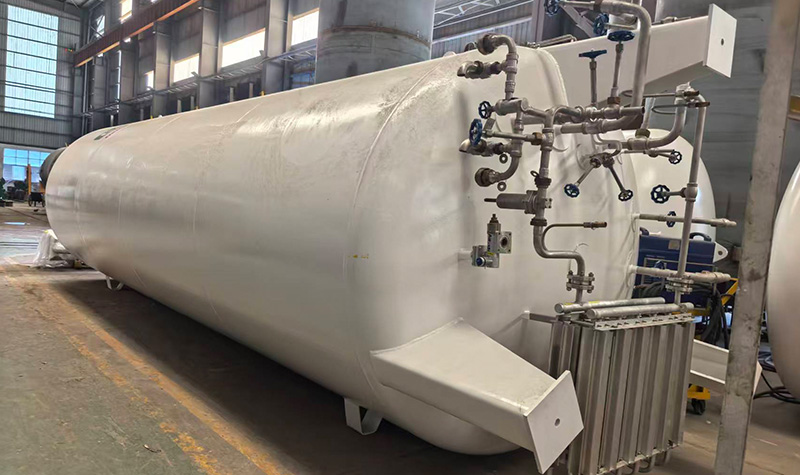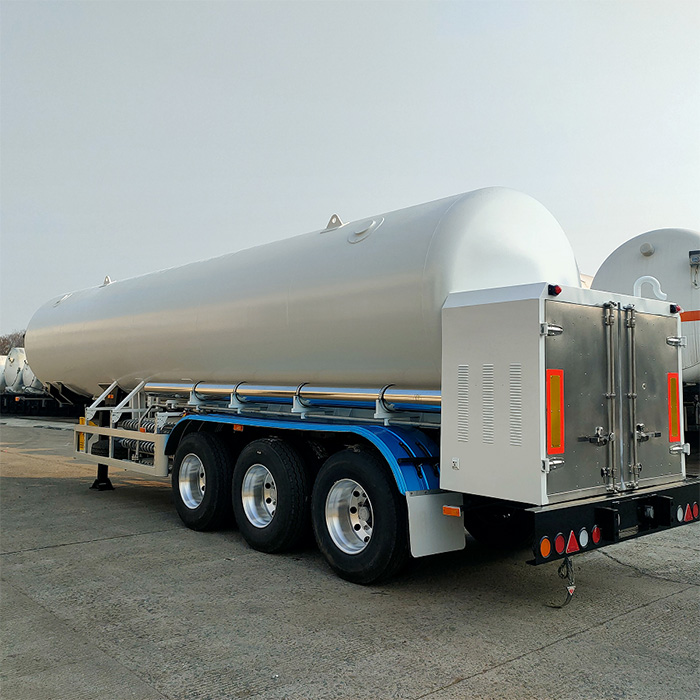Liquid argon (LAR) is a low-temperature, non flammable, non-toxic inert industrial gas as an essential gas in industrial and high-tech fields. Liquid Argon (LAR) is a liquid product produced from air separation plant by liquefying and distilling air. It is widely used in fields such as welding protection, semiconductor manufacturing, and metal heat treatment.
Due to its extremely low boiling point (about -186℃), there are strict requirements for equipment, operation, and environment during storage and transportation. Because of its extremely low temperature and high density (about 840 times that of gaseous argon), storing and transporting argon in liquid form has significant advantages in terms of economy and efficiency.
Type of storage vessel
A: Dewar flask
- Capacity: 80L//175L/195L/210L/500L/1000L etc
- Structure: similar to a large hot water bottle,withdouble-layer stainless steel structure, and with a high vacuum in the inter-layer and filled with multiple layers of insulation material (MLI). The cervical canal is the main pathway for heat transfer. Equipped with safety valves, pressure gauges, and rupture discs etc.
- Features: Portable, suitable for use in laboratories, small welding workshops, and other settings. Can beequipped with wheels, boosters, and gasifiers, it can directly output gas.
B: Fixed Cryogenic Storage Tank
- Capacity: ranging from 3M3 to 300M3 or even larger.
- Structure: . The inner liner is usually made of stainless steel, the outer shell is made of carbon steel, and the inter-layeris high vacuum multi-layer insulation. Generally equipped with a complete pressure building system, pressure relief device, liquid level gauge, and remote monitoring system.
- Purpose: To provide centralized gas supply for the entire factory or industrial park.
C Cryogenic Mobile Tank /Cryogenic Semi-trailer
- Capacity: 5~38M3
- Structure: like thehorizontal tank installed on a truck or trailer, equipped with all safety and control functions, used for transportation from the production site to end users or satellite stations.
Storage critical systems
- Insulation system: high vacuum environment eliminates convective and conductive heat transfer, while multi-layer and perlite insulation materials greatly reduce radiative heat transfer for cryogenic tanks.
- Pressure building system: a coil (evaporator) immersed in liquid, allowing a small amount of gas to pass through, gradually increasing the pressure inside the container, making it easier to push the liquid out.
- Pressure relief device: crucial part including main safety valve and backup safety valve (bursting disc), used to prevent overpressure hazards caused by insulation failure, excessive pressure construction, or other faults.
- Measuring instruments: level gauges (magnetic float type, capacitive type, etc.) and pressure gauges, used for real-time monitoring of the status inside the tank.
Storage precautions
- Daily boil off rate: even with the best insulation system, heat transfer cannot be completely avoided. A certain proportion of liquid argon evaporates into gas every day,. Evaporation rate is a key indicator for measuring the performance of cryogenic storage tanks.
- Pressure control: Regular venting is required to control pressure. When demand is low, pressure will gradually increase and excess gas must be released through safety valves or manual exhaust to prevent overpressure.
- Impurity prevention: It is necessary to prevent air (especially moisture and carbon dioxide) from entering the storage tank, otherwise it will condense into ice or dry ice, blocking pipelines and valves.



